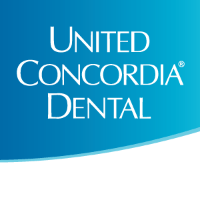Comprehensive Family Dentistry in Chicago
Chicago’s Top Dentist and Orthodontist
Hablamos Espanol
Compassionate, Comprehensive Dental Care in Chicago
Go Ahead and Smile. We’ve Got You!
- Silver Invisalign Provider
- Board Certified Kid’s & Adult Orthodontist
- Most Major Insurances Accepted
- Kid-Care Accepted
- Night & Weekend Appointments
- Emergency Walk-Ins Accepted 11 AM-3 PM Monday-Friday
- 4.9 Stars on Google 1600+ Reviews
At ABC Dental, we proudly serve Chicago families with expert, affordable dental care in a welcoming environment. Located in the heart of Logan Square, our experienced dental and orthodontic team offers a full range of services — from routine cleanings and deep dental cleanings to braces, dentures, extractions, and more. Whether you need urgent dental treatment or a long-term care plan, we’re here to help you smile with confidence.
We offer complete family and cosmetic dental services, including:

While you have many options for dentists in Chicago, we invite you to try our practice. We offer FREE INITIAL CONSULTATIONS and SECOND OPINIONS on treatment plans and dental procedures. Our patients consistently tell us that we deliver the best service for the best price.
We’re confident we can beat any written estimate from another licensed dentist. Call us for a FREE SECOND OPINION 773-481-2200.
Hablamos Espanol
What Our Patients Are Saying
Our Dental Services
Pediatric Dentistry
Gentle and compassionate dental care for your littlest ones from 1 to 18.
Family Dentistry
Get the high quality dental care your smile deserves.
Affordable Dentures
High quality and affordable dentures to bring smiles back to your life.
Invisible Braces
Reinvent your smile in as little as 6 months with invisible braces.
Orthodontics
Standard metal braces for kids and more severe adult tooth and bite alignments.
Emergency Dental
Same day dental appointments for tooth pain, chipped teeth,…
Our Location
4608 W. Diversey, Chicago IL 60639
We are open 6 days a week with plenty of free parking.
| Monday | 11 am - 7 pm |
| Tuesday | 11 am - 7 pm |
| Wednesday | 10 am - 5 pm |
| Thursday | 10 am - 5 pm |
| Friday | 9 am - 7 pm |
| Saturday | 9 am - 4 pm |
| Sunday | CLOSED |
Call 773-481-2200
Or Schedule Online Here
Meet Our Doctors

Dr. Nada Zayafoon
Dr. Nada Zayzafoon (known to her patients as Dr. Nada) loves helping adults and children achieve healthy smiles.

Dr. Ankur Shah
Dr. Ankur Shah’s extensive training in complex dental conditions enables him to treat a wide variety of conditions.

Dr. Jianjun Hao
Dr. Jianjun Hao is a board certified orthodontist who has been treating adults and children for over a decade.
Latest Articles
Dentures Feeling Loose? Your Chicago Dentist’s Guide to Fixes & Solutions
That slipping, clicking, or rocking sensation with your dentures is more than just annoying—it can make eating, speaking, and smiling a challenge. If your dentures are feeling loose, you're not alone, and it doesn't necessarily mean they are broken. Often, it's a...
Your Checklist for Finding the Best Denture Specialist in Chicago
Choosing the right professional to restore your smile with dentures is one of the most important health decisions you can make. The right specialist ensures comfort, function, and a natural look, while the wrong choice can lead to frustration and ongoing issues. At...
Top 5 Partial Denture Questions, Answered by Chicago Dentist
At ABC Dental in Chicago, we believe an informed patient is a confident patient. If you’re considering partial dentures to replace missing teeth, you likely have questions—and you’re not alone. Based on countless conversations with patients from The Loop to Lincoln...
Insurances We Accept












If you don’t see your insurance provider, call our office at 773-481-2200.
We are a Care Credit office and can help you get the care you need.
Book Your Free Orthodontic Consultation in Chicago
The right orthodontic care at the right time can change everything. Whether you are ready for braces or want a discreet solution like invisible aligners, our experienced team is here to help.
Call us at (773) 481-2200 to book your complimentary consultation. ABC Dental proudly serves Chicago families with expert, compassionate teen orthodontics—because a confident smile shouldn’t have to wait.








